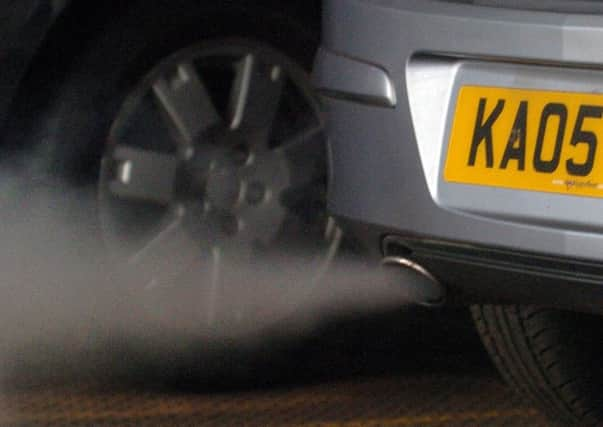Government air strategy '˜shifting the blame' to councils


Critics claim the decision to condemn the use of “charging zones” in areas where pollution exceeds legal targets – while leaving the option open to councils – will fail to deliver the change required and “dodges responsibility”.
The criticism comes as the new plan reveals up to seven local authorities in Yorkshire could be asked to take action to address poor air quality in their area, including in Doncaster, Bradford and Wakefield.
Advertisement
Hide AdAdvertisement
Hide AdThis is in addition to action being taken in the pollution hotspot of Leeds, where ministers suggest significant measures are needed to cut pollution levels “in the shortest possible time”.
“This is the Tories’ third attempt to meet legal air quality standards, and it is pretty thin stuff,” said the incumbent Labour MP for Wakefield and chair of the Environmental Audit committee Mary Creagh.
“Rather than taking responsibility for the quality of the air our children breathe, this Tory government is trying to palm this issue off onto cash-strapped local councils.
“Nearly 200 people a year in Wakefield die prematurely because of air pollution... This plan will not deliver the step change that people in Yorkshire’s cities need.”
Advertisement
Hide AdAdvertisement
Hide AdThe Government was originally due to publish its draft strategy on April 24 after previous plans to improve air quality were judged to be unlawful.
The strategy is a response to high levels of toxic nitrogen dioxide emissions and other pollutants which are believed to be responsible for thousands of premature deaths in the UK every year.
Ministers recently sought to delay the release of the plan, citing pre-election “purdah” rules. The application was rejected by the courts, but not before critics accused the Government of running scared from a crack down on heavily-polluting diesel cars.
Announcing the publication of the plan today, Environment Secretary Andrea Leadsom described it as a “common sense way” to improve air quality and build “a stronger and cleaner economy”. Proposals include new schemes to encourage the uptake of electric taxis and hydrogen vehicles, and an increase in the number of charge points for electric vehicles.
Advertisement
Hide AdAdvertisement
Hide AdThe strategy also calls for the first tranche of Clean Air Zones (CAZ)– including the planned site in Leeds – to be implemented “within the shortest possible time”. It names a further 70 town and cities, including Doncaster, Bradford, Sheffield and Wakefield, where roads exceed legal pollution limits and the government is in “discussions” about possible solutions.
In some affected areas there have been suggestions that the introduction of a “charging zone” similar to the one in London could prove effective at curbing emissions.
However, the new plan actively discourages this route, and the Conservatives yesterday criticised the measure as a penalty on “ordinary working families”.
Responding to the strategy, Leeds Council member for the environment, Lucinda Yeadon, accused the Government of “dodges responsibility by pushing the issue on to local authorities”.
“This is political calculation at its worst... To have any chance of reducing these harmful emissions we need a national solution,” she said.